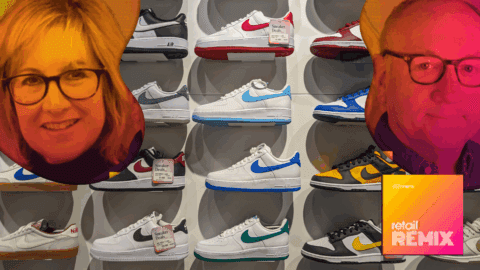For the 2011 back-to-school (BTS) shopping season, retailers that stepped outside the pencil box with innovative branding and promotions reported big wins for Q2.
In past years retailers have leaned on celebrity endorsements to message BTS offerings to customers, but this year more brands have emphasized the connection of mobile and social as part of an overall integrated strategy. Particularly because BTS shopping is most prevalent among younger demographics, it’s clear that retailers understand that mobile and social channels are a must to effectively engage and message to this audience segment.
The 2011 BTS season reportedly saw the highest spending during this period since 2006, according to MasterCard SpendingPulse, which compared spending in July, August and September in school-related categories. Additionally, BTS sales from July to September 2011 rose 6% from 2010, which indicates greater optimism for holiday spending, according to Consumer Growth Partners, a retail consultancy.
“The retail industry finally has come to the realization that consumer confidence and retail sales don’t move in lock-step with each other,” noted Paula Rosenblum, Managing Partner, Retail Systems Research (RSR). “Consumer confidence is low, but people are still shopping. It appears that the consumer confidence index relates more to the future than to today’s shopping trips. Because unemployment remained essentially the same as last year, it will not be material to retail sales this year. So I tend to agree with the general perception that holiday sales will be up 4% to 5% over last year.”
Retailers Launch Innovative Campaigns For Back To School
A number of retailers took innovative approaches to BTS promotions to capture the greatest market share from a seemingly tentative customer base.
While retail brands have traditionally catered to young shoppers during the BTS season, Target’s apparel and accessories line for the period drew inspiration from The Hamilton Wood Type & Printing Museum in Two Rivers, Wisc. The Minneapolis-based retailer created a BTS line with graphics that came directly from the museum’s collection.
“This is the first time we’ve ever partnered with a museum to do an apparel collection,” Michael Alexin, Target’s VP of Product Design and Development for Apparel and Accessories told the Minneapolis Star Tribune. “Everyone in the business does denim and T-shirts. We thought, ‘How do we differentiate ourselves by leveraging design to create something really unique?'”
The museum graphics appeared on pencil cases, handbags, pajamas and clothing in 1,755 Target stores nationwide. In addition, Target leveraged social and mobile channels with its “1,000 Likes” promotion throughout August, which offered shoppers the opportunity to save between 40% and 50% on BTS graphic items. The first 1,000 guests to “Like” the deal received a mobile coupon for an item to be redeemed at Target stores.
In 2010 Target distributed scannable coupons that shoppers could redeem at the point of sale. This year’s promotion considerably upped the ante on Target’s use of digital channels to promote BTS offerings.
Target’s same-store sales rose 4.1% in August, beating Wall Street’s estimate of 3.5%. BTS and back-to-college sales were in line with expectations, according to the company, whose total sales rose 5.4% in August.
Tapping direct mail, email, mobile and social media, Macy’s launched a BTS cause marketing campaign in conjunction with DoSomething.org, a youth volunteer organization. Macy’s donated $1 to the organization for every designated quick response (QR) code that consumers scanned from within Macy’s mystylelab or juniors and young men’s departments. When scanning, customers received volunteer opportunity information in addition to videos with current fashion trends. Macy’s also donated $1 for every “Like” on the mystylelab Facebook page.
Macy’s posted a year-over-year gain in August of 5%, beating expectations of a 4.5% increase. The retailer had expected an additional 1.5% in sales, but like many other East Coast retailers, those sales was thwarted by store closings and lower customer traffic due to Hurricane Irene, which caused severe damage across the East Coast as well as the Caribbean and Atlantic Canada in late August.
To message its BTS offerings, JCPenney tapped the growing trend of QR codes and Microsoft tags, implementing them throughout billboards, subway stations, magazine ads and direct mail. The company also capitalized on the newer trend of “haul videos,” which presents the opportunity for shoppers to broadcast their latest finds on YouTube. Event staff at JCPenney’s Haul Nation Station were in-store to provide advice and assistance to teens interested in filming a “haul” video. The staff also wore t-shirts with scannable QR codes. The mobile bar codes connected customers to a Haul Nation mobile experience to view other haul videos. Additionally, the company added QR codes to its in-store findmore smart fixtures; this allowed consumers to scan the code directly in order to view an instructional how-to video that educates them on scanning mobile bar codes.
As retailers continue to connect mobile, social and other differentiators as part of their seasonal branding and promotions, upcoming opportunities such as the 2011 holiday selling season should further underscore the disconnect between retail sales and overall consumer confidence.












